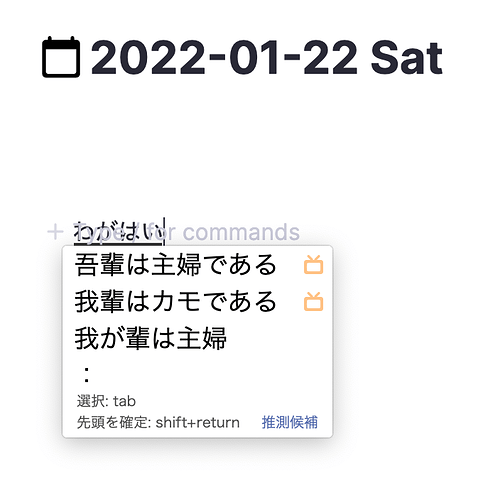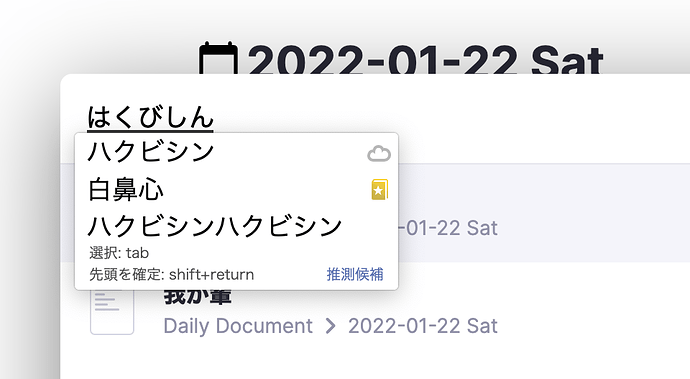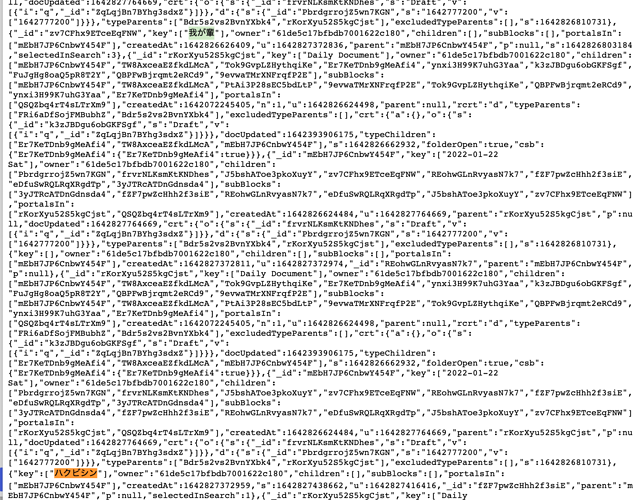Hi - I’d like to echo what others have said about Japanese input being rather buggy.
Editor does not mix with IME text entry
It appears from errors and a couple of posts in here that you’re using slatejs for the block editor, which I’ve seen used in other projects (Slite for one), where it has similar problems with non-English “Input Method Editor” IME-based language entry. Here’s one issue about it:
What’s happening is this: When I try to input in Japanese, first of all the UX is different between Chrome and the desktop app. I’m using the “ATOK” IME in macOS, which is a 3rd party IME popular here in Japan. At any rate, Japanese entry kind of works in Chrome in that you can enter with some difficulty, but does not work at all in the desktop app, where what you enter simply disappears. I can’t say if this is a slatejs problem or not.
In either case, entry looks like what you can see in the screenshot below. One’s entry is kind of half obscured by the placeholder text which is sort of “see through”.
In general, entering via IME is a step-wise process that works like this:
- switch to Japanese entry (on Mac you can select it from an icon in the menu bar, and, there’s a keyboard shortcut to switch between - ctrl-space iirc)
- enter the phonetic sound of what you want to enter, so for “Tokyo” you’d enter toukyou which translates to 東京. The entry system will give some choices of kanji to pick from, in a dropdown that appears near your cursor.
- if there are multiple choices in the dropdown, you use the arrow key to select what you want to enter. (There are a lot of homophones in Japanese so this is just what you have to do to type. I would guess it’s similar in Chinese or Korean as well.)
- press Enter, to finally enter that selected text at the cursor
At least in Slite’s case, they were able to fix the way Slatejs works in their product, so Japanese entry became smooth after that. Further, when you’re switched to English in Slite, it works as expected. That gives me hope that this is fixable in Remnote too?
Secondly, a Workaround for Search
A cursory test shows me that searching Japanese strings works both in the desktop app or web app. But the mechanics of search is pretty finicky and fiddly.
If you do the normal thing, which would be to enter your Japanese text as usual and press enter to “cement” the string you’re trying to type, Remnote kind of takes that to mean you want to enter that string in the last selected rem you were working on, and enters your search term there. It’s a jarring bug, since you’re not expecting something like that. It feels like the UI is kind of “freaking out”.
Fortunately there’s a workaround. If you enter using your IME in the search bar, and use the mouse to select from the dropdown, it searches and finds that term correctly.
Finally, on Localization
There are some components to localization:
- UI string localization - UI aspects are in the user’s local language, like “search” is labeled as 検索 in Japanese
- UX localization - this is more about making the UI make sense, so, things like having the the right date format or grammatically correct string:variable order.
- Search localization - many, many apps simply don’t consider language when setting up search and just assume everything is like English. Fortunately remnote’s search is basically working (have not thoroughly tested), but, the IME bugs make it seem like it does not work.
- Editing localization - editing should work for any language or keyboard, with our without IME.
- Storage or database localization - data should be able to be stored in unicode, and backups (data, files) should not choke because there’s unicode being stored.
- Output localization - if you’ve got, say, PDF export, those PDFs should look fine in whatever language. For example, Atlassian’s Confluence solves this by allowing admin users to upload TTF files so the reports work. It’s a bit ugly, but, at least it works. Json or csv etc output should work fine in the target language as a text file.
In my opinion, just fixing the “editing localization” point, making IME’s work, and confirming storage/database, as well as export, would take away a lot of the problems people using IME’s with CJK languages are facing.
I did a cursory export test and Japanese appears correct in the exported json. FYI.
I hope you’ll consider fixing this, as people can muddle through even if the UI is English.



